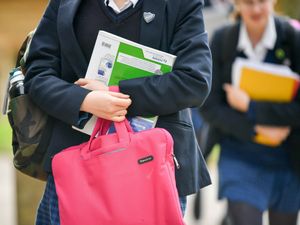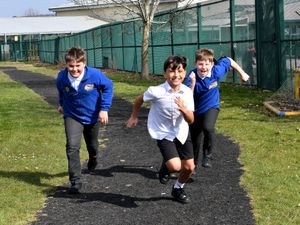Majority of secondary schools in England have pupils at home self-isolating
About 6% to 7% of state school pupils did not attend class for coronavirus-related reasons on October 22, according to the Department for Education.

The majority of secondary schools in England sent home at least one pupil because of coronavirus last week, Government figures show.
About 6% to 7% of state school pupils did not attend class for coronavirus-related reasons on October 22, according to the Department for Education (DfE) statistics.
Approximately 26% of schools, excluding those on half-term, said they had one or more pupils self-isolating due to potential contact with a Covid-19 case at school, compared with 21% the week before.
This is 55% of secondary schools and 20% of primary schools.
Schools on half-term last week have been excluded from the analysis to give as clear a picture as possible of attendance in schools that would be open.
Overall, school attendance dropped from 89% a week earlier to 86% on October 22, the data suggests.
About 82% of secondary school pupils were in classes last week – excluding schools on half-term – while attendance in primary schools dropped to 90%.
The figures come after access to Government-provided laptops was cut for some schools after the DfE changed its allocation process to align orders with areas with more pupils self-isolating.
The notification on Friday was sent the day after a new legal duty on schools to provide immediate access to remote learning to pupils at home because of Covid-19 came into force.
Up to 18% of schools said they had 30 or more pupils self-isolating due to potential contact with a case of Covid-19 inside the school, the data suggests.
The majority of pupils (between 4.8% and 6%) absent from class last week were self-isolating due to potential contact with a case of coronavirus inside or outside the school, the DfE analysis says.
About 0.7% of pupils were absent as their school was closed for coronavirus-related reasons, 0.4% were off as they suspected they had Covid-19 and 0.1% were off after testing positive for the illness.
The DfE says the data is not directly comparable with previous weeks as October 22 figures represent 92% of state schools compared with all schools.
Geoff Barton, general secretary of the Association of School and College Leaders (ASCL), said: “This analysis paints a grim picture of the increasingly challenging situation facing schools with attendance falling amidst rising Covid infection rates.
“In this turbulent context, it is crucial that schools are able to provide disadvantaged pupils with laptops so they can work from home if they have to self-isolate and do not have access to these devices.
“However, it is very clear that the Government has completely underestimated the number of laptops that are needed.”
Mr Barton added: “Our impression is that the Government has never fully grasped the scale of the challenge both in terms of the numbers of devices that are needed and over ensuring that families have the connectivity they require.
“It is very frustrating that progress has been so slow on this front despite the fact that it has been discussed for many months.”
Nick Brook, deputy general secretary of school leaders’ union NAHT, said: “The widening gap in pupil attendance between primary and secondary clearly raises important questions about the different experiences of pupils in these phases, and whether we are seeing an equivalent increase in the rate of older children falling ill.
“What is absolutely clear right now is that we need to be confident that the testing system is up to scratch, so that pupils without Covid can return to school rapidly and miss as little of their education as possible.”
Dr Mary Bousted, joint general secretary of the National Education Union (NEU), said: “The latest figures on school absence add to an ever-more compelling argument that Government needs to be vastly more assertive in its efforts to futureproof schools against the effects of Covid outbreaks.
“They are shocking numbers.”
A DfE spokeswoman said: “Over 99% of schools have been open every week since term began and millions of pupils were attending last week, benefiting from time with their friends and teachers.
“As we would expect, some pupils are self-isolating in line with public health advice but the average size of those groups is relatively small compared to the total number of pupils on roll.
“Remote education should be provided from the first full school day that a child has to remain at home to ensure they do not fall behind.”





